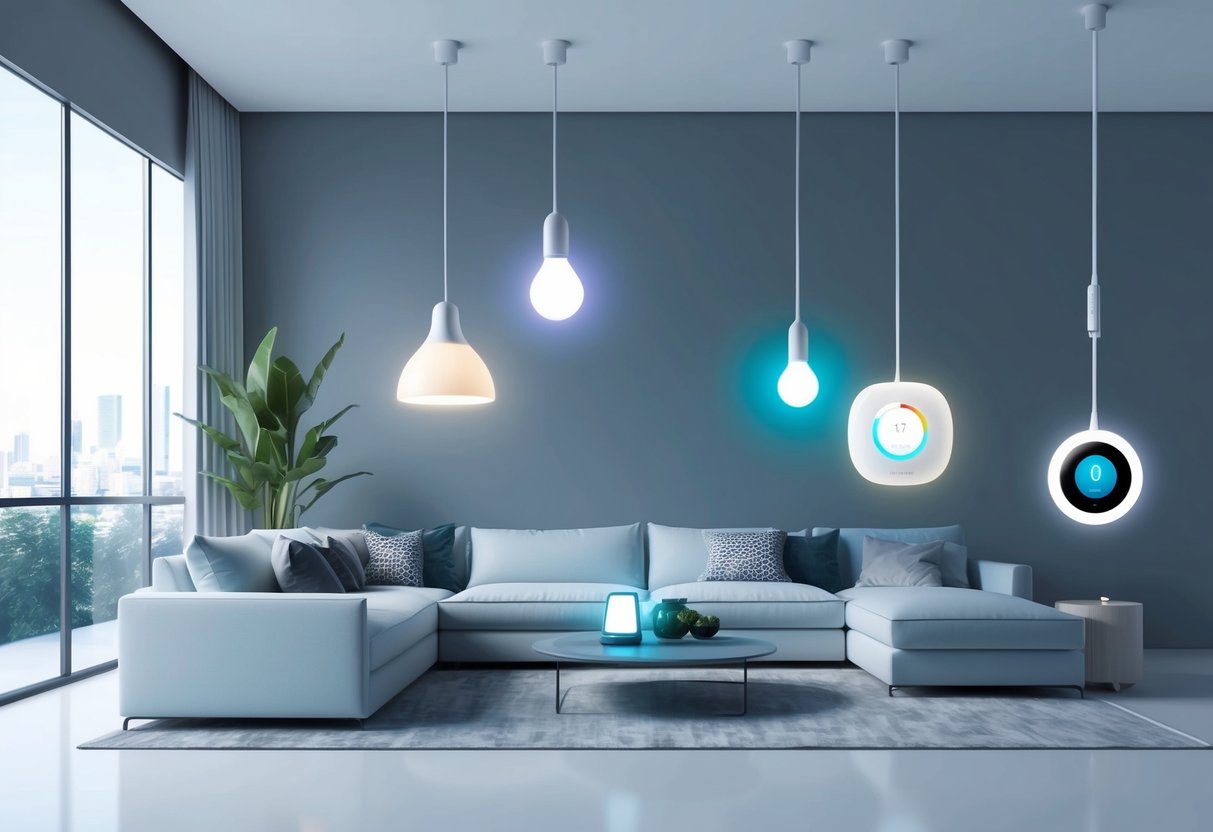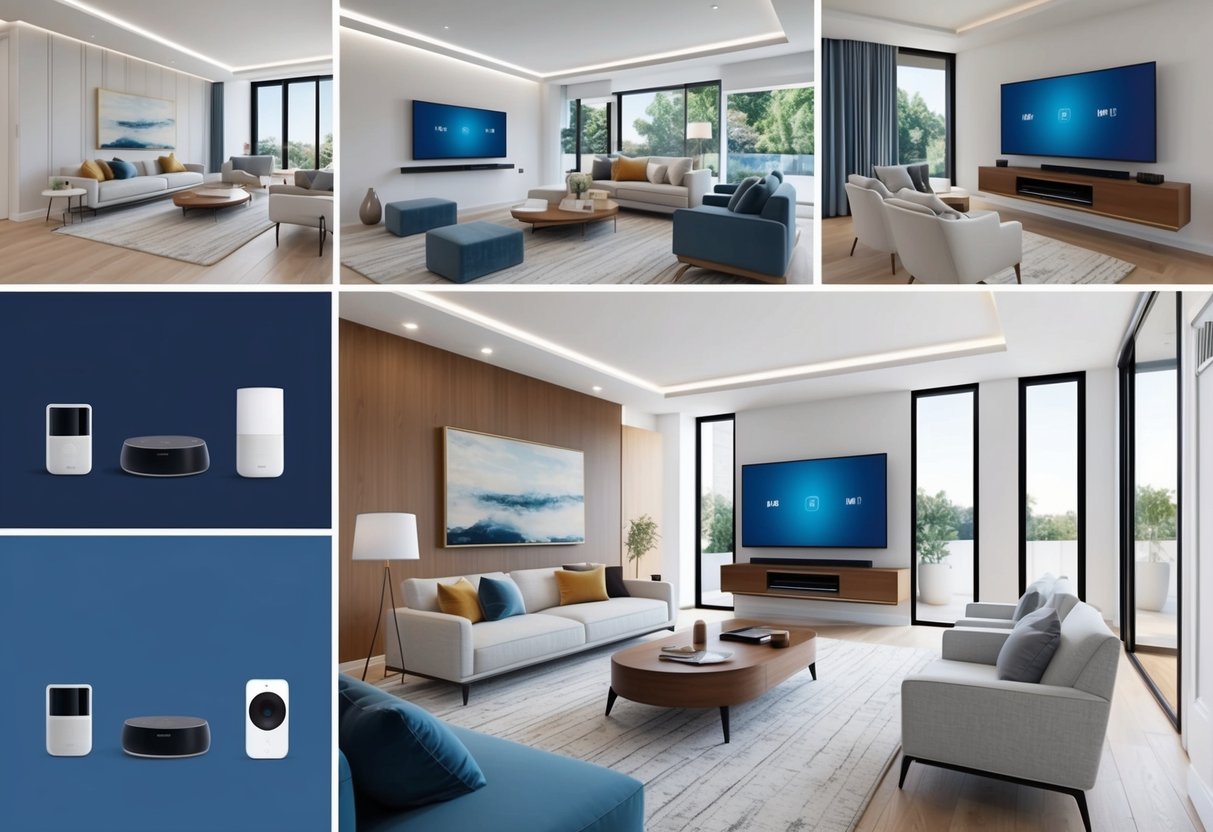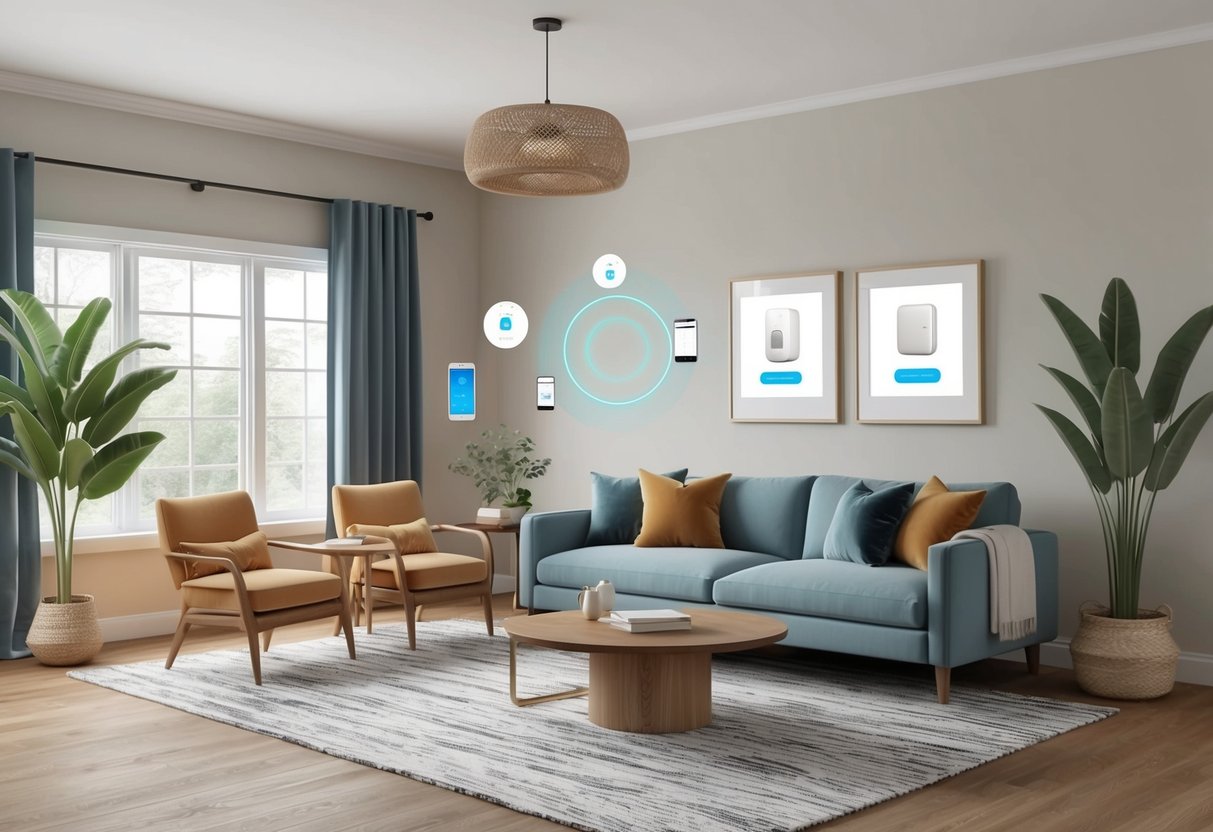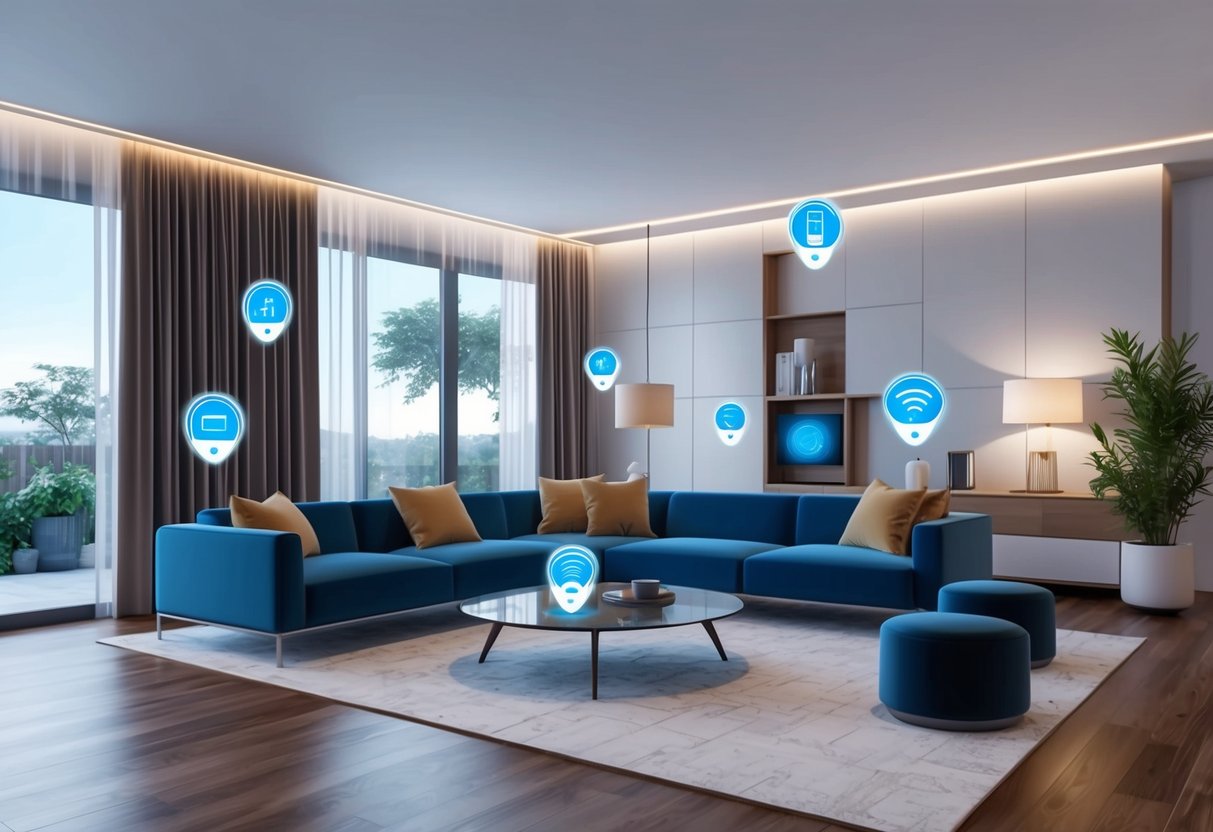
Entertainment and Multi-Room Audio

Home entertainment has become smarter and more convenient. Devices like smart speakers, multi-room audio systems, and smart displays let anyone control music and media in every room.
Control is often possible using just voice or a simple app.
Smart Speakers and Multi-Room Setups
Smart speakers are a popular choice for effortless music streaming, voice commands, and hands-free control of other smart home devices. Brands like Sonos, Amazon Echo, and Google Nest offer solutions that can scale from a single room to an entire home.
Many models support high-quality audio playback and can be grouped together for synchronized sound throughout the house. Multi-room audio systems allow residents to play music, podcasts, or radio in multiple rooms at once, either in sync or separately.
Modern platforms often work seamlessly with Spotify, Apple Music, and other streaming services. Amazon’s Echo Dot is an affordable entry point, while Sonos and Bluesound cater to those seeking premium sound and advanced features.
User-friendly mobile apps make managing playlists and devices simple. Voice integration adds hands-free convenience.
For more details on tested systems and top recommendations, see this guide to the best multi-room wireless systems.
Key benefits:
- Expandable and customizable setups
- Voice control via Alexa, Google Assistant, or Siri
- Integration with streaming services and existing speakers
Smart Displays for Entertainment
Smart displays combine visual information and audio playback in a single device. Devices like the Amazon Echo Show 10 and Google Nest Hub Max feature touchscreens that display video content, song lyrics, smart home controls, and video calls.
With a smart display in the kitchen, users can watch cooking tutorials, follow recipes, or listen to music while cooking. In a living room, a larger smart display can stream shows, manage smart lights, or display a family photo slideshow.
They also act as communication hubs, supporting video calls and messaging within the household or with friends. Top-rated smart displays usually come with high-quality speakers and far-field microphones for accurate voice recognition.
Some models double as control centers for the whole smart home, displaying security camera feeds, calendar reminders, or weather updates. For a breakdown of the latest top-performing smart displays, visit this list of the best smart home devices for 2025.
Budget-Friendly Smart Home Gadgets

Affordable smart home devices offer practical features for comfort and automation without the need for a large investment. Many top-rated picks now combine essential convenience with straightforward installation.
These products cater to renters and homeowners alike.
Affordable Automation Devices
Smart plugs, Wi-Fi outlets, and smart thermostats remain among the best options for those starting their home automation journey. These devices enable users to control lamps, fans, or other small appliances directly from a mobile app or through voice assistants like Alexa and Google Assistant.
Popular Choices:
- Amazon Smart Thermostat: Known for being both cost-effective and easy to set up, this model helps automate temperature adjustments and can contribute to energy savings over time. It integrates seamlessly with Alexa, offering app-based scheduling and remote control.
- Wi-Fi Smart Plugs: Affordable options from brands like Kasa and TP-Link let users turn devices on or off remotely or set schedules for everyday convenience. Many are compatible with both iOS and Android.
A table comparing the features of entry-level smart plugs and thermostats can help buyers decide:
| Device Type | Smartphone Control | Voice Integration | Energy Monitoring | Typical Price Range |
|---|---|---|---|---|
| Smart Plug | Yes | Yes | Sometimes | $10–$25 |
| Smart Thermostat | Yes | Yes | Often | $60–$80 |
For more recommendations, PCMag lists the best budget-friendly smart home devices.
Entry-Level Smart Lighting
Starter smart lighting products make it easy to change the ambiance of any room while keeping costs under control. Bulbs from Philips Hue and Wyze fit into standard sockets and often connect via Wi-Fi or Bluetooth, eliminating the need for extra hubs.
Notable Features:
- Customizable Schedules: Users can set specific times for lights to turn on or off, improving security and energy efficiency.
- Voice Controls: Many bulbs support Amazon Alexa, Google Assistant, or Apple HomeKit, so users control lighting with simple voice commands.
- Color and Brightness Adjustments: Even the most affordable bulbs often allow users to change color temperatures or brightness, adapting to different moods or tasks.
These products allow anyone to set up smart home gadgets for convenience and comfort. For more details on top picks, see the options highlighted by TechRadar’s smart lighting recommendations.
Advanced Automation and Integration

Modern smart homes excel when devices and platforms work seamlessly together. Integrated automation saves time, boosts efficiency, and creates smooth user experiences.
IFTTT and Automation Routines
IFTTT (If This Then That) is a popular service that connects different smart devices and apps. Users can craft complex routines with no coding required.
These automation routines link actions and triggers—such as automatically turning on lights when a smart lock is unlocked, or starting a coffee maker when a motion sensor detects movement in the morning. A practical example is using IFTTT to send a notification if a smart home security camera detects motion while nobody is home.
IFTTT supports a huge list of platforms, so users can automate between brands like Philips Hue, Google Home, and Ring. Its cloud-based workflows offer flexibility, which is ideal for people who use devices from multiple manufacturers.
This kind of interoperability is essential for cohesive smart home experiences.
Connectivity with Samsung SmartThings
Samsung SmartThings acts as a central hub that unifies various smart devices. It enables cross-brand communication across Wi-Fi, Zigbee, and Z-Wave.
Users can control thermostats, lights, sensors, and more from one app or voice assistant. SmartThings supports automation powered by conditions and device states, such as automatically locking all doors when the TV is turned off at night.
Advanced routines can combine security, climate control, and entertainment. These can be easily managed through an intuitive dashboard.
According to PCMag’s coverage of top smart home devices, the SmartThings platform is a recommended choice for its broad compatibility, strong automation tools, and integration support. It works for both beginners and power users wanting to expand their ecosystem.